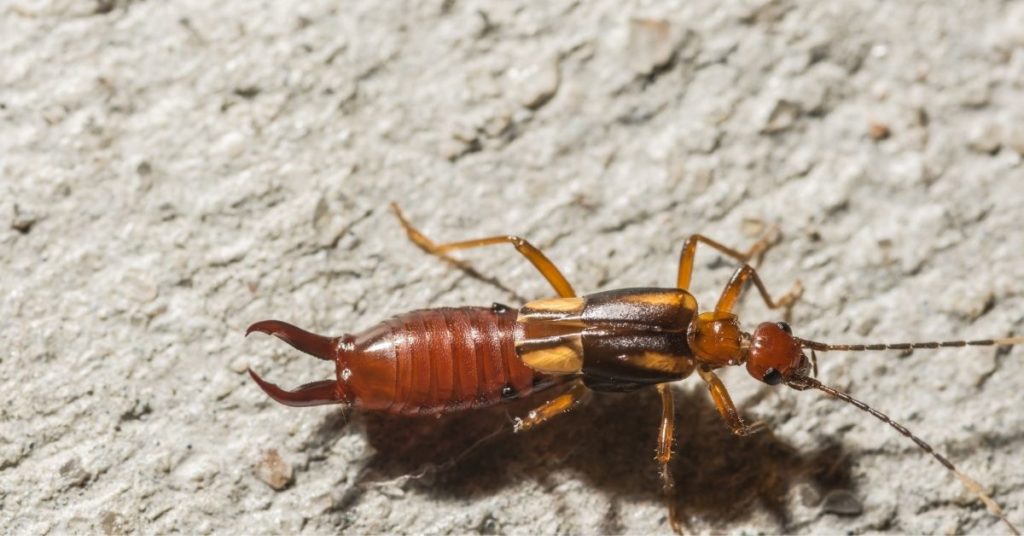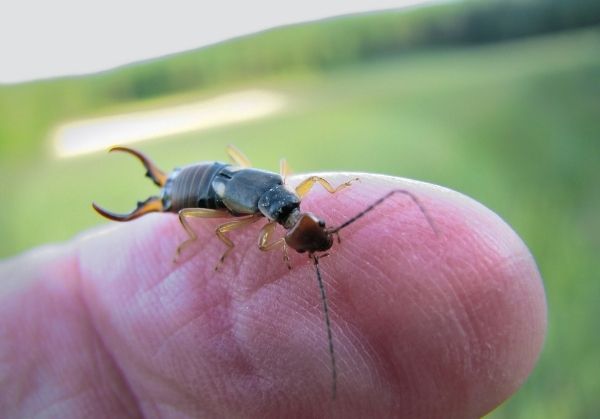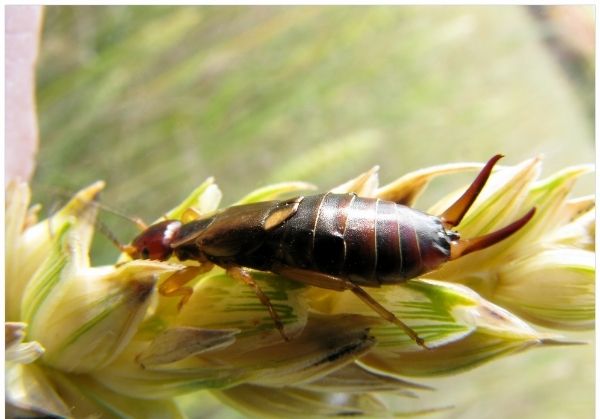Earwig Pest Control in Charlotte: Identification & Prevention

When it comes to pest infestations, earwigs are far less of a nuisance than other insects like ants, cockroaches, or stinging insects, but they can look intimidating. If you start to notice earwigs in and around your home, you’ll likely want to get rid of them as quickly as possible.
Fortunately, you don’t have to worry about earwigs climbing into your ears at night. Although earwigs were thought to get into people’s ears, that is a common misconception. That said, earwig infestations can damage houseplants and produce foul-smelling odors, so you’ll want them gone sooner rather than later. In this article, we’ll show you how to identify an infestation and what to do about it.
What is an Earwig?
The scientific name for an earwig is Dermaptera, which translates to “skin wing.” The name stems from the fact that earwigs have two sets of leathery wings on their back, although they rarely use them. There are around 2000 varieties of earwigs worldwide, but only two species within the Carolinas. The European earwig is the most common, although you can find the Ring Legged earwig in North Carolina as well.
Although an earwig’s scientific name refers to its less-functional wings, the most distinguishing feature of this insect is its large forceps (called cerci) on the back of its abdomen. It’s these pincers that make earwigs look more dangerous than they are, although they don’t use them for attacking, only defense. Typically, earwigs use their cerci to fight off other insects and earwigs, especially during mating season.
Earwig mothers can lay up to 50 eggs at a time, typically under the soil. Unlike other insects, earwig mothers will stay with their young until they’ve molted for the first time, so you might find an earwig with a bunch of babies (although unlikely).
Where Do Earwigs Live?

These insects don’t do well in dry heat or cold weather, which is why they’re so prevalent in the south. Earwigs love warm, moist climates and love to hide in soil, tree bark, roots, and other spots that offer both protection and food.
Inside, earwigs still like to hide in warm areas, such as attics and crawl spaces. You may notice them hiding among crumpled newspapers or cushions, particularly those left out on the porch. Any sites that provide warmth and shelter are highly inviting for earwigs.
What Do Earwigs Eat?
While earwigs can be pesky when they invade your home, they’re actually pretty beneficial as they eat many garden pests, such as aphids and mites. Besides insects, earwigs like to feed on plants and decaying matter, such as rotting wood or grains. If you have food lying around in a warm, damp pantry, earwigs will likely congregate and feast on items like rice, cereal, or cookies.
Are Earwigs Dangerous?
Despite their appearance, earwigs are not harmful to humans or pets. If you agitate an earwig, it will likely try to fend you off with its pincers, but they look far more intimidating than they are. It’s incredibly rare for those pincers to break the skin, and earwigs don’t have any venom or poison, so even if it does happen, you can simply dress the wound.
How to Deal with an Earwig Infestation in Charlotte
Although earwigs are generally harmless, they can be a nuisance if they get inside the home. Typically, earwigs will venture indoors when the weather gets too cold or dry. As winter approaches, most earwigs will burrow underground for the season, so you shouldn’t notice them until spring or summer. Let’s break down the basics of handling an earwig infestation in your home.
Signs of an Earwig Infestation
Fortunately, earwigs are not social animals, nor do they travel in large packs or populations. At most, you might see a handful of them at a time. Better yet, earwigs don’t make a nest, so you don’t have to worry about them spreading and taking over your house.
Another sign of earwigs in the home is a strong, foul odor. However, these insects typically produce the scent only after getting squished (much like stink bugs).
How to Prevent an Earwig Infestation

Earwigs are attracted to lights and warm, damp places. If you have improperly stored food, it may attract earwigs, but you should worry more about other pests like rats or cockroaches, as they will be even more of a nuisance and danger.
Overall, the best way to avoid an “infestation” of earwigs is to seal any cracks that may allow the insects to get inside and to keep areas free of clutter. Reducing indoor humidity can also deter them from coming inside.
How to Remove Earwigs
Since you’ll only find one or two earwigs at a time, you can remove them a couple of different ways. First, you can pick them up, either by hand or with tongs and place them outside. Earwigs are often beneficial to the ecosystem, so there’s no reason to kill them. However, if you have a particular grudge against the species, you can dump them in soapy water to kill them.
The second way to remove earwigs is with a vacuum cleaner hose. Then, all you must do is remove the bag and dump the insects outside. Since these bugs are intimidating, you can let the pros handle removal and prevention instead for the best results.
Contact Carolina Pest Management
Although you can remove earwigs yourself, calling professional pest control specialists is better. Not only can we root out where earwigs may be hiding, but we can identify potential entry points so that they shouldn’t bother you again in the future.
Depending on how and why earwigs are invading your home, you might have to contend with other, more annoying pests like cockroaches and ants. Carolina Pest Management is here to handle all of your pest control needs, so call us for a consultation and to set up a home visit.
